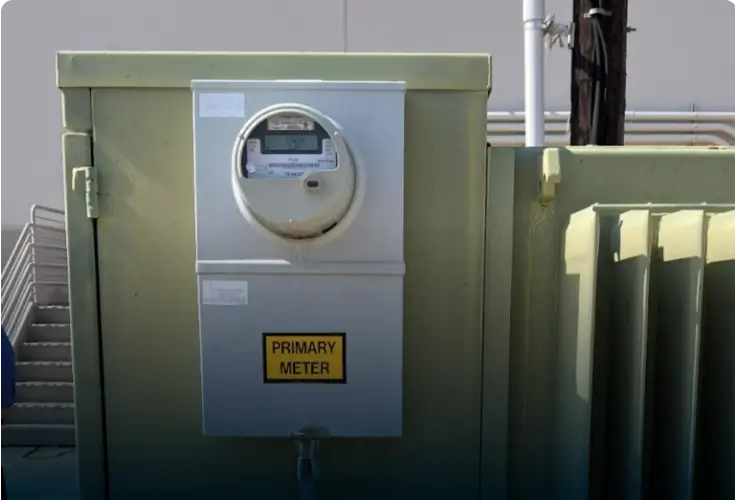The GRESB reporting season for 2024 data has just come to a close.
When the results come out in October, your rating might look steady. Familiar. Maybe even “good enough”.
But don’t be fooled.
GRESB is a relative benchmark. Your peers spent 2024 testing utility data collection strategies, selecting vendors, and getting their portfolios ready to scale. This year — 2025 — is when those rollouts are happening at scale.
By the time next year’s scores hit, the game may already have shifted completely.
And if you're just now starting to think about data coverage, you’re looking at 2026 at best.
More realistically? 2027.
The delay between taking action and seeing GRESB results is exactly what makes this risky — by the time the consequences appear, there’s nothing you can do.
Scaling Takes Time
Boosting data coverage across your portfolio isn’t a flip-the-switch initiative.
There is time evolved in evaluating technology providers, identifying and scoping an initial phase of assets to deploy in, onboarding the software and/or installing shadow metering, connecting data to Energy Star, and executing on a portfolio-scale rollout.
Even in the best-case scenario, getting from planning to portfolio-scale rollout takes several months—especially when your assets span different regions, tenant types, and building configurations.
Of course, the right vendor can help accelerate the process significantly—as in one case where we deployed in over 100 buildings in just four months.
But most firms don’t start there. They begin with a subset of the portfolio to implement a Phase I, and understand the process before scaling.
Even with the right provider, getting to full portfolio coverage is going to take time.
Why timing might be your biggest enemy
Let’s play this out.
As mentioned, GRESB ratings are relative. If a wave of peers makes big moves in utility data coverage, the baseline shifts.
Let’s say you submit 2024 data with 45% utility coverage across your portfolio. This might be enough for a 3-star rating. Next year? That same number could cost you one or two full stars, depending on how aggressively others moved.
Dropping 2 stars can mean losing a fund in your LP and limiting your ability to access capital markets.
Now, say you start planning a utility data coverage initiative in Q3 2025. Even with best-case execution, you don’t reach portfolio-scale coverage until late 2026. GRESB reports that in 2027.
By then, your peers who tested and validated their strategy in 2024 will have already scaled across their portfolios in 2025. Their progress will show up clearly in the 2026 GRESB results.
If you’re only starting now, the earliest you’ll see portfolio-level results in GRESB is 2027, maybe even 2028 if things slip.
That puts you at least one year behind.
If you head into next year expecting it to look like this one, you might be in for a wake-up call. Waiting for your 2025 score before making a move might feel conservative. But in this game, it’s a hell of a delay.
And in a relative rating system, delay is declining.
GRESB: Looking Ahead
For years, GRESB primarily rewarded data coverage, how much of your portfolio you could report on. It’s still the biggest single source of points, 19.5 in total across energy, GHG, water, and waste.
But now the emphasis is shifting. Starting in 2025, GRESB will also reward operational performance — meaning carbon intensity, energy efficiency, and real outcomes, not just inputs.
This is where things get tricky in triple net leases. You don’t control operations, right? You may not even have access to the data yet.
But that won’t stop the scoring shift.
A forward-looking strategy—one that drives data coverage today while positioning your portfolio for performance tomorrow—is how you stay ahead of the curve.
And here’s the good news: the utility data you collect can become the engine behind real decarbonization progress.
The Bottom Line
In the end, GRESB is the language investors speak. If you want access to capital, you have to play the game, and that means getting serious about utility data.
Standing still, waiting for results, hoping this year’s changes won’t impact you? That’s the trap.
If you’re serious about catching up—or staying ahead—start now. And start by choosing a partner that doesn’t just sell hardware or software, but knows how to deploy at scale, avoid the traps, and translate data into results.
In a market that’s evolving quietly but decisively, falling behind doesn’t look like a dramatic failure. It looks like doing “enough”, while others quietly pass you by.
CASE STUDY
Top 10 Global Asset Management Firm deploys Enertiv to get 100% utility data coverage across 100+ industrial sites
Light at the end of the tunnel
If you’ve made it this far, you’ve likely realized that implementing a utility data collection system in-house involves much more than installing meters and connecting APIs.
Yes, it’s possible to build it from scratch.
But it takes time, resources, and a learning curve that’s hard to fully anticipate.
Unless this is your core business, you’ll likely spend years learning lessons we’ve already paid for — through failed installs, messy integrations, and countless conversations with teams with real-world demands.
What may seem like a straightforward checklist today was, for us, a long path marked by challenges and meaningful breakthroughs.
Today’s sustainability leadership depends on speed and data precision. If you’re serious about hitting decarbonization targets, every delay in collecting accurate utility data is a missed opportunity.
That’s why going through this entire build process internally can actively slow your energy transition.
You don’t need to start from zero to reach net zero. You just need to avoid the mistakes that stall everyone else.





%20consider.webp)
